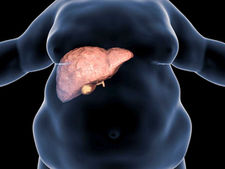
Diagnosis and Treatment Methods in Cardiology
The correct diagnosis method brings with it the correct treatment method. Therefore, using the right methods to treat the disease is the most important part. Diagnostic methods applied in our hospital's cardiology outpatient clinic include blood tests, ECG, ECO, Holter ECG, holter blood pressure, EFOR test, coronary angiography as both a diagnosis and treatment method, wig coronary interventions (PTCA, stent), cardiac catheterization and temporary and permanent pacemaker, depending on the complaints. (pacemaker) methods.
ECG This diagnostic method is used to diagnose many heart diseases, especially heart rhythm disorders. The patient is placed in a lying position, pegs are attached to the forehead and ankles, and wired electrodes connected to the ECG device are attached to the chest, arms and legs. Thus, the patient's heart rate and rhythm are measured and then the data is taken from the ECG device. ECO, also known as echocardiography, is an ultrasonographic diagnostic method that is easily used because it does not involve radiation, and in the ECO application, the patient is first laid down on the left side. Gel is applied to the patient's chest and an ECO head is passed around the heart area.
Holter ECG This diagnostic method, which is used to detect irregularities and arrhythmias in heartbeats, is a 24-hour method. Electrodes connected to the recorder are attached to the body and measure heartbeat for 24 hours. Holter Blood Pressure This diagnostic method used to measure hypertension and hypotension takes 24 hours. A portable electronic device that measures and records the patient's blood pressure while continuing their daily activities is wrapped around the patient's arm and remains with the patient for 24 hours. EXERCISE Test In this diagnostic method, the patient is placed on a device such as a treadmill, barefoot and topless. Electrodes connected to the EFOR device with cables are attached to the chest area. Heart rate and rhythm measurement are monitored on the screen connected to the device. Every three minutes, the front of the belt rises further, creating a slope-type floor. It can be terminated if the patient feels tired.
Although it varies from person to person, it may take between 10 and 30 minutes. Cardiac Catheterization This practice, which is one of the diagnostic methods and also known as cardiac catheterization, involves administering contrast material to the vein and keeping imaging records. The patient should fast for 4 – 12 hours before the application.
Before the procedure to be performed on the groin or arm, these areas are anesthetized and a cannula is placed in the vein in the area. The catheter, that is, the thin tube, is delivered to the heart cavities and the pressure is recorded. By administering contrast material, a type of medical dye, the arteries are visualized and a film is recorded. With this method, heart problems in the patient are diagnosed. Coronary Angiography This procedure, which is both a diagnosis and treatment method, aims to open the blocked vessel by entering the arm through a wire for treatment. Additionally, as a diagnostic method, vascular occlusion is checked to see if more serious treatment is required or if there is another disease. Balloon Angioplasty: A very successful treatment method, a balloon is inflated in the vessels opened after coronary angiography. This balloon pushes the plaques causing the blockage towards the walls and blood flow is ensured. It is performed under local anesthesia while the patient is awake. A one-day hospital stay may be required after the application.
Coronary Stent If sufficient patency cannot be achieved in the vessel in which the balloon is inflated and there is still difficulty in blood flow, stent application is performed. A stent may be required depending on the narrowed area in the vessel where the balloon is inflated. The stent can be thought of as a steel wire cage and is placed over the inflated balloon. If the obstruction recurs, balloon and stent application can be performed again. Generally, the patient is taken to intensive care after the application and it is a procedure that requires an average of two days of hospitalization. Temporary and Permanent Pacemakers Temporary pacemakers are installed to treat arrhythmia, tachycardia, heart attack and to prevent complicated situations after heart surgery. In cases where a permanent pacemaker needs to be installed, it can be used until a permanent pacemaker is installed.
It has a large generator and is connected to the heart with cables. It is located outside the body. For the battery to be inserted into the patient in the cath laboratory, the cable is taken to the heart through a vein from the groin or arm area and connected to the battery. In case of permanent rhythm disturbances, permanent pacemaker application is performed. The battery is placed on the opposite side of whichever arm the patient uses more. It is usually done with local anesthesia.
The patient is taken to the catheterization laboratory and anesthetized with intravenous medications. Under local anesthesia, the cables are advanced to the heart through the vein and the pacemaker battery is placed in the pocket opened under the muscles. More advanced (ICD and CTR-D) pacemakers are also used for this method, which is also applied in heart failure.
FOR INFORMATION AND APPOINTMENT, YOU CAN LEAVE YOUR NUMBER OR ASK OUR EXPERTS
YOU CAN LEAVE YOUR NUMBER FOR INFORMATION AND APPOINTMENT AND ASK QUESTIONS TO OUR EXPERTS



-04.png)
-06.png)
-05.png)
-08.png)
-07.png)























